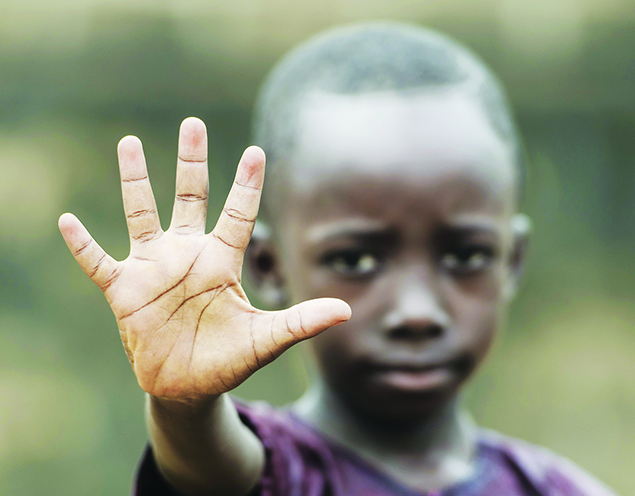Call to action to end Infant Oral Mutilation
A call to action to end Infant oral mutilation (IOM) - an East Africa campaign initiative
Infant oral mutilation (IOM) is a dangerous and sometimes fatal traditional dental practice undertaken in children that can have very serious health consequences. This practice is undertaken by many indigenous African tribes, mainly from East and central Africa. It involves the extirpation of the buds developing deciduous canines (tooth worm) in infants and young children by traditional healers, without anaesthesia and using unsterile tools such as a bicycle spoke, a hot nail, a penknife etc, and the wound is sometimes dressed with concoctions made out of various herbs. The associated illnesses in the child are common illnesses at this age, relating to teething and change of immunity as the child transition from maternal to self-immune system.
 The consequences of the practice on the child range from shock, anaemia, sepsis, tetanus, HIV/AIDs transmission, associated dental abnormalities as dilacerations, hypoplasia, displacement to succedaneous teeth, and even death. A number of studies have been done on IOM, mostly centred on prevalence and effects of the practice. These studies have shown a general increase in the practice despite the availability of the knowledge on its effects to the young child. They have even reported a prevalence of as high as 87% in 6 months to 24 months-old children in a Kenyan community, and a fatality rate of 21.1% in a Ugandan hospital sample of children admitted after IOM. The photographs opposite show a 5 year-old child who underwent IOM of all the 4 primary canines. Note the loss of space and the occlusal discrepancy caused.
The consequences of the practice on the child range from shock, anaemia, sepsis, tetanus, HIV/AIDs transmission, associated dental abnormalities as dilacerations, hypoplasia, displacement to succedaneous teeth, and even death. A number of studies have been done on IOM, mostly centred on prevalence and effects of the practice. These studies have shown a general increase in the practice despite the availability of the knowledge on its effects to the young child. They have even reported a prevalence of as high as 87% in 6 months to 24 months-old children in a Kenyan community, and a fatality rate of 21.1% in a Ugandan hospital sample of children admitted after IOM. The photographs opposite show a 5 year-old child who underwent IOM of all the 4 primary canines. Note the loss of space and the occlusal discrepancy caused.
At a meeting of Paediatric Dentistry Association of East Africa, in July, 2017, this practice was noted and extensively discussed, since it affects children from the region. In attendance was Prof. Raman Bedi, who had been invited by the Association to officiate the conference opening. The delegates at the meeting agreed to make a call to action to stop IOM, and proposed amongst other things, a formation of a multi-agency outfit that would help achieve the goal in the next 10 years. Knowing how serious IOM is in the region, the delegates requested GCDF assistance in managing this problem, given its enormity and extensive coverage in the area and across borders. A committee comprising members from each participating country was formed and tasked to work out and coordinate the activities leading to this stoppage (action plan) was proposed, with a commitment given by all that this practice should be ended. It was also tasked in working out plans, and with the assistance of GCDF, for networks with potential organizations and institution in achieving this aim, so that no child should ever have to be subjected to such practice again.







